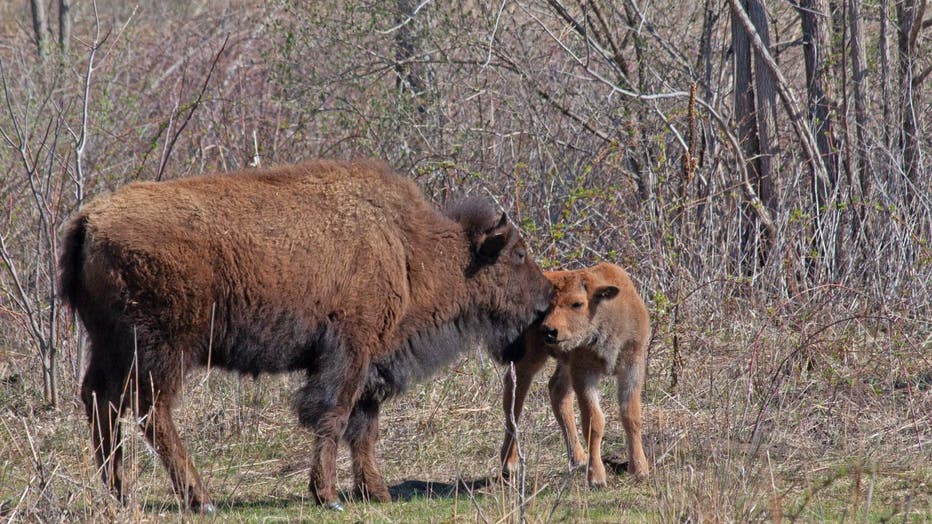Bison calves bring joy to Spring Lake Park Reserve in Dakota County

Bison herd in Dakota County welcomes calves
Dakota County Parks is welcoming two bison calves to their growing herd as part of an effort to bring bison back to Minnesota prairie lands.
DAKOTA COUNTY, Minn. (FOX 9) - When a herd of bison was brought to Spring Lake Park Reserve in Dakota County as part of a state-wide effort to bring the native animals back to Minnesota prairies, park officials didn’t know two of those bison were pregnant.
About two weeks ago, two bison gave birth to two calves. That brings the herd to a total of 10 bison.
"We knew we were getting eight [bison] and we knew there was a possibility that some might have been pregnant," Tom Lewanski, Natural Resource Manager of Dakota County Parks said. "Lone behold, two weeks ago one of the two-year-old females gave birth and almost 24 hours later, a second one gave birth."
Lewanski and county officials brought the bison to this protected prairie in October after about four years of planning. They’re at the park as part of the Minnesota Department of Natural Resources’ Bison Conservation Herd.

Dakota County Parks is welcoming two bison calves to their growing herd as part of an effort to bring bison back to Minnesota prairie lands. (Dakota County Parks )
"State Parks is mandated by statute to reintroduce desirable species, so we try to look for opportunities where we can restore those species that were once present now missing that can contribute to the ecosystem," Ed Quinn, Natural Resource Program Supervisor for the Division of Parks and Trails with the DNR, said.
For thousands of years bison roamed North America’s native prairie lands and played a vital role in the ecosystem. Quinn and Lewanski explain the bison graze on the tall grasses, allowing wildflowers to thrive, giving food to insects and pollinators, in turn, supporting the rest of the ecosystem like birds and other mammals.
"They’re so important to this ecosystem that if you take them away the ecosystem doesn’t function like it did historically," Lewanski said.
The Dakota County bison graze in a prairie within the Spring Lake Park Reserve along the Mississippi Greenway bike trail. Park officials say they hope people learn more about the bison, their importance to the ecosystem, and how vital they were to indigenous communities that lived here.
The Dakota County bison are ten of around 160 in Minnesota. The goal is to have a total of 500 in the program. Currently, there are similar populations at the Minnesota Zoo, Blue Mounds State Park, Minneopa State Park and Zollman Zoo in Olmsted County. The project receives support and some funding from the Shakopee Mdewakanton Sioux Community.
Find more information on the Dakota County bison here.

Bison Graze in Dakota County
For the first time in 180 years, Bison are grazing on Prairie Land in Dakota County.

